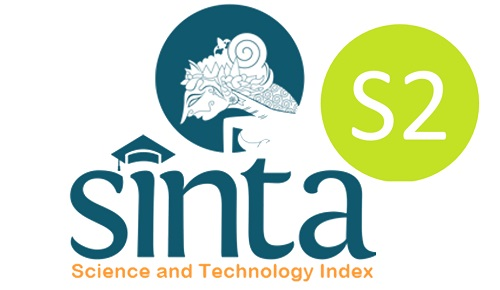INFORMATION AND COMMUNICATION TECHNOLOGY (ICT) AND ITS ROLE IN EDUCATIONAL ASSESSMENT
DOI:
https://doi.org/10.22373/ej.v3i1.664Keywords:
ICT, assessment, technology-based assessment.Abstract
This paper identifies the role of ICT in assessment practices in education. The significant factors that schools and teachers should consider include the benefits it can provide to improve and enhance assessment. The primary focus of this paper is: What are the roles ICT can provide to support assessment in education? ICT has several roles and supports in educational assessment practices. This paper empha-sizes its roles in two parts: testing, and tasks. ICT can be used in testing to administer tests, to score the tests, to analyse the result and to facilitate teachers in assessing learning outcomes. Besides, ICT can be integrated in completing student’s task such as portfolio and project-based assessment. ICT provides opportunities for students to create electronic versions of their portfolio. ICT can also support students to complete their project. It is essential for teachers to realise that the rubric used to assess e-portfolios and projects must also assess students’ technology use.Downloads
References
Brown, H. D. (2004). Language Assessment - Principles and Classroom Practices. New Tork: Pearson Education Inc.
Brown, H. D., & Abeywickrama, P. (2010). Language Assessment - Principles and Classroom Practices (2 ed.). New York: Pearson Education Inc.
Burgstahler, S. (2010). Working Together: People with Disabilities and Computer Technology. Retrieved from http://www.washington.edu/doit/Brochures/PDF/wtcomp.pdf
Burkhardt, H., & Pead, D. (2003). Computer Based Assessment - A Platform for Better Tests? In C. Richardson (Ed.), Whither Assessment? (pp. 133-148). London, UK: Qualifications and Curriculum Authority.
Butler, S. M., & McMunn, N. (2006). Measurement and Assessment in Teaching. San Fransisco: Josey-Bass.
Campbell, A. (2005). Application of ICT and rubrics to the assessment process where professional judgement is involved: the features of an e-marking tool. Assessment and Evaluation in Higher Education, 30(5), 529-537.
Dawley, L. (2007). The Tools for Successful Online Teaching. London: Idea Group Inc.
Ferrara, V. M. (2010). Technology for online portfolio assessment programs. The Journal of Continuing Higher Education, 58(3), 184-185.
Gipps, C. V. (2005). What is the role for ICT-based assessment in universities? Studies in Higher Education, 30(2), 171-180.
John, P. D., & Wheeler, S. (2008). The Digital Classroom: Harnessing Technology for the Future. New York: Routledge.
Jamieson, J. (2005). Trends in computer-based second language assessment. Annual Review of Applied Linguistics, 25, 228-242.
Jonassen, D., Howland, J., Marra, R. M., & Crismond, D. (2009). Meaningful Learning with Technology. New Jersey: Pearson Education Inc.
Leung, C.-K., Chang, H.-H., & Hau, K.-T. (2003). Computerized Adaptive Testing: A Comparison of Three Content Balancing Methods. Journal of Technology, Learning, and Assessment, 2(5). Retrieved from http://www.jtla.org
Loveland, T. R. (2005). Writing standards-based rubrics for technology education classrooms. Technology and Engineering Teacher, 65(2), 19-22.
McDonald, M. E. (2007). The Nurse Educator's: Guide to Assessing Learning Outcomes (2 ed.). Brooklyn: Jones and Barlett Publishers.
Meyer, B., & Latham, N. (2008). Implementing electronic portfolios: Benefits, challenges, and suggestions. Educause Quarterly, 1, 34-41.
Mills, C. N., Potenza, M. T., Fremer, J. J., & Ward, W. C. (2002). Computer-Based Testing - Building the Foundation for Future Assessments. Mahwah, New Jersey: Lawrence Erlbaum Associates, Inc.
NCME. (2002). Item and Tes Disclosure for Computerized Adaptive Tests. In C. N. Mills, M. T. Potenza, J. F. John & W. C. Ward (Eds.), Computer-Based Testing - Building the Foundation for future Assessment. Mahwah, New Jersey: Lawrence Erlbaum Associates.
Nitko, A. J., & Brookhart, S. M. (2011). Educational Assessment of Students. Boston: Pearson.
OECD. (2001). Learning to Change. Retrieved June 15, 2010, from http://www.oecdbookshop.org/
Strudler, N., & Wetzel, K. (2005). The diffusion of electronic portfolios in teacher education: Issues of initiation and implementation. Journal of Research on Technology in Education, 37(4), 411-433.
Tiene, D., & Ingram, A. (2001). Exploring Current Issues in Educational Technology. New York: McGraw-Hill.
Tucker, B. (2009). Beyond The Bubble: Technology and the Future of Student Assessment. Washington: Education Sector.
Downloads
Published
Issue
Section
License
Proposed Policy for Journals That Offer Open Access
Authors who publish with Englisia journal agree to the following terms:
- Authors retain copyright and grant the journal right of first publication with the work simultaneously licensed under a Creative Commons Attribution License that allows others to share the work with an acknowledgement of the work's authorship and initial publication in this journal.
- Authors are able to enter into separate, additional contractual arrangements for the non-exclusive distribution of the journal's published version of the work (e.g., post it to an institutional repository or publish it in a book), with an acknowledgement of its initial publication in this journal.
- Authors are permitted and encouraged to post their work online (e.g., in institutional repositories or on their website) prior to and during the submission process, as it can lead to productive exchanges, as well as earlier and greater citation of published work (See The Effect of Open Access).









